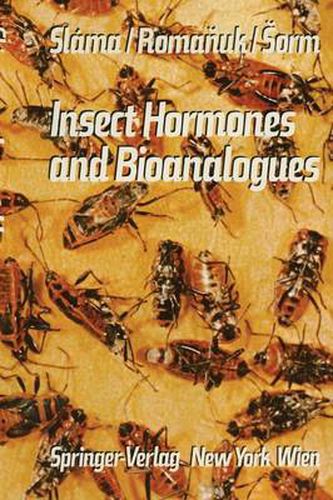Readings Newsletter
Become a Readings Member to make your shopping experience even easier.
Sign in or sign up for free!
You’re not far away from qualifying for FREE standard shipping within Australia
You’ve qualified for FREE standard shipping within Australia
The cart is loading…






This title is printed to order. This book may have been self-published. If so, we cannot guarantee the quality of the content. In the main most books will have gone through the editing process however some may not. We therefore suggest that you be aware of this before ordering this book. If in doubt check either the author or publisher’s details as we are unable to accept any returns unless they are faulty. Please contact us if you have any questions.
The application of organic insecticides in the agrotechnical praxis resulted in a great and unexpected progress in the control of insect pests, and was of a great economical value all over the world. The widespread application of these agents, however, is also accompanied by negative effects. The principal drawback of classical insecticides consists in the lack of their specificity, the useful insects being killed together with insect pests. Furthermore, the broad-scale application for many years led to the formation of more resistant insect strains requiring higher and higher doses of insecticides. The residues of the mostly used chlorinated compounds accumulate in human and animal foods producing directly or indirectly harmful effects in human sub jects. The critical situation led in many developed countries to the restriction in the usage of some types of classical insecticides. Under these circumstances it is quite natural that novel routes for the control of insect pests are investigated. In this connection, attention has been paid especially to the insect endocrinology and insect hormones which regulate the admirable and in many regards specific development from the egg to the adult insect. The recent successful discoveries in this field are thus in close relation to the practical requirements. Isolation and identification of moulting hor mones and juvenile-hormone-like naturally occurring substances not only made possible an exact investigation of their physiological effects but also stimulated the chemical research.
$9.00 standard shipping within Australia
FREE standard shipping within Australia for orders over $100.00
Express & International shipping calculated at checkout
This title is printed to order. This book may have been self-published. If so, we cannot guarantee the quality of the content. In the main most books will have gone through the editing process however some may not. We therefore suggest that you be aware of this before ordering this book. If in doubt check either the author or publisher’s details as we are unable to accept any returns unless they are faulty. Please contact us if you have any questions.
The application of organic insecticides in the agrotechnical praxis resulted in a great and unexpected progress in the control of insect pests, and was of a great economical value all over the world. The widespread application of these agents, however, is also accompanied by negative effects. The principal drawback of classical insecticides consists in the lack of their specificity, the useful insects being killed together with insect pests. Furthermore, the broad-scale application for many years led to the formation of more resistant insect strains requiring higher and higher doses of insecticides. The residues of the mostly used chlorinated compounds accumulate in human and animal foods producing directly or indirectly harmful effects in human sub jects. The critical situation led in many developed countries to the restriction in the usage of some types of classical insecticides. Under these circumstances it is quite natural that novel routes for the control of insect pests are investigated. In this connection, attention has been paid especially to the insect endocrinology and insect hormones which regulate the admirable and in many regards specific development from the egg to the adult insect. The recent successful discoveries in this field are thus in close relation to the practical requirements. Isolation and identification of moulting hor mones and juvenile-hormone-like naturally occurring substances not only made possible an exact investigation of their physiological effects but also stimulated the chemical research.